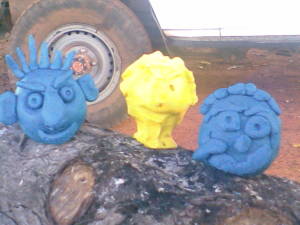 It is the phone call that every counsellor dreads to get. Remember that girl you were working with a few years ago? Well she committed suicide. This is what happened to me this week. It was like a punch in the stomach. I was winded. How could that possibly happen to such a beautiful soul who had bravely let me into her life, to confront the demons of her past? Unfortunately, this is a common scenario for remote Aboriginal communities. Having to find a way to pick up the pieces and carry on, with so many unanswered questions and tears for their loved ones. For Aboriginal people, the decision to end the hurt and pain is often made hastily, perhaps after an argument and in the heat of the moment. It happens too quickly. There are no plans made days in advance. So if there is no one around in that split second, the chances of intervention are slim.
It is the phone call that every counsellor dreads to get. Remember that girl you were working with a few years ago? Well she committed suicide. This is what happened to me this week. It was like a punch in the stomach. I was winded. How could that possibly happen to such a beautiful soul who had bravely let me into her life, to confront the demons of her past? Unfortunately, this is a common scenario for remote Aboriginal communities. Having to find a way to pick up the pieces and carry on, with so many unanswered questions and tears for their loved ones. For Aboriginal people, the decision to end the hurt and pain is often made hastily, perhaps after an argument and in the heat of the moment. It happens too quickly. There are no plans made days in advance. So if there is no one around in that split second, the chances of intervention are slim.
Aboriginal communities in Australia lose their young people to suicide at higher rates than every other country in the world, apart from Greenland. So what can we do about this terrible statistic which leaves threatens to continue the legacy of intergerational trauma?
Well, I believe we have to start with the mothers who are pregnant right now. If we can ensure little babies reach their third birthday without experiencing trauma (namely abuse or neglect, which includes witnessing domestic and family violence abuse) then their chances of growing up strong and healthy, physically, emotionally and spiritually are very high. 90% of a child’s brain has developed by then. Every baby has the right to experience a caring, responsive and safe environment or “a social womb”. Unfortunately, for the girl who left us this week, this wasn’t the case. I clearly remember the one hope that she had for her future and her family. To be safe. For babies growing up in unsafe homes, they may not have any tangible memories as older children, but their brain and their body never forget. The brain and body continue to work together in a state of constant alertness to danger, making it impossible for the child to relax, let alone conform to the expectations of society.
The latest neuroscience research supports the proposition that early childhood trauma is a risk factor for mental health issues later in life including self harm and suicide. It is this research that has informed the work we’ve been doing over the last four years, developing trauma prevention tools for use with pregnant women and women with toddlers. This program still remains unfunded.
In the meantime, a community is left grieving, yet again and I am left with feelings of helplessness. Then I am reminded of the work of the Dulwich Centre when a spate of suicides in NE Arnhemland led to a project which documented the strengths and skills of Aboriginal communities in surviving hard times. Some beautiful stories of ways communities support each other and honour their loves ones was documented. It is in the power of community responses that this dreaded problem might once again be addressed. For me, this is where the hope lies. And women play a large role in it.
I decided to send a copy of the document “These Stories Are Like a Healing“ to the community in mourning this week. I hope that it gives them strength to get through the next weeks, months and years ahead. I hope that it reminds them of the incredible strengths, skills and knowledge that they have to respond in times like this. Perhaps they have lost touch with these skills? And a gentle reminder might empower them to find a way forward to prevent such a thing happening again.
I finish by sharing one of the stories that touched me from “These Stories Are Like A Healing”. It helps to alleviate some of the helplessness and sadness I feel when I hear about the loss of an Aboriginal child or young person to suicide.
Dreams
“Sometimes our loved ones visit us in our dreams. They tell us that they are all right now and they offer us comfort through their words and their touch. We don’t get frightened by this. We know they are caring for us. In this way, they still offer us comfort even though they are no longer here on earth.
Sometimes, if they regret things that they did, or how they died, they may even come back in a dream to apologise to their mother or father about what took place. These dreams can be very comforting. We also feel their presence during our waking hours. We feel them when we least expect it. Certain smells or sounds evoke them. Our loved ones remain with us. They walk with us in life.”
Beautiful huh?

